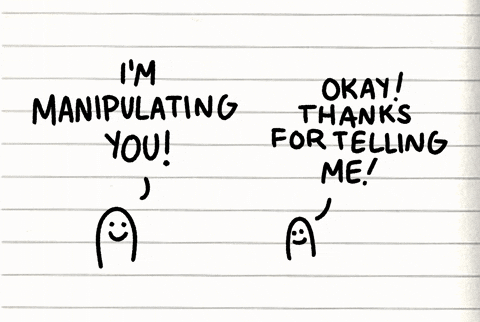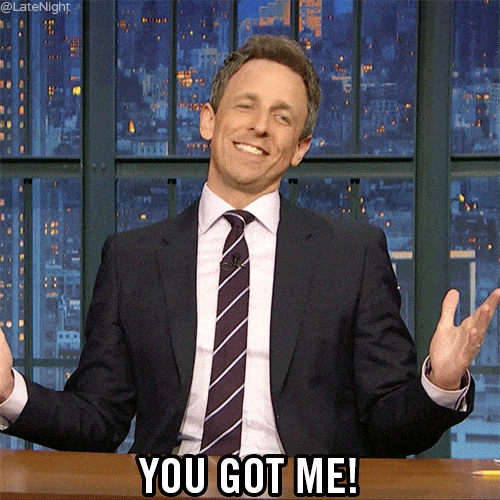- The Ladder
- Posts
- Nintendo, rats and rewards
Nintendo, rats and rewards
🎮 How gamification will level-up your brand

👋 Hello and welcome,
This week we’re taking a shorter approach again to minimise the time we take out of your ‘lunch at your desk’ time today. But don’t worry you’ve still got killer knowledge to drop in this afternoon’s team meeting.
Hope you enjoy the shorter format.
If you missed last week’s edition on creating marketing objectives that are worth a damn, you can catch-up ⏪️ here
This week:
📖 - How gamification takes rats, rewards and badge to level-up your brand
🧰 - New tools to fill up that belt.
🗞️ - News from around the marketing world.
🧩 - The puzzler.
Hope you enjoy.
La la la la life goes on,


If you were sent The Ladder, click below to subscribe.
“Games are the only force in the known universe that can get people to take actions against their self-interest, in a predictable way, without using force.”
⏱️ ~ 5 minutes 22 seconds read
“I swear I’ve got you this time Alec Trevelyan” I mutter under my breath.
I’m carefully and quietly edging my way down the metal staircase. Pistol fully loaded and raised.
I spot him running into the electrical room, and then disappear down a hatch in the floor of the room.
Just as I near the hatch opening, I crane my neck to peer over without being spotted.
shhhhh… Thunk! Thunk! Thunk!
My legs go wobbly and a red mist fills my vision.
I’m on the floor, and before it goes completely dark I see the boots of two of his goons as they come to inspect their work.
Damn you Alec Trevelyan!!! 😡
I must’ve been killed by Alec and his goons at least three thousand times over the years as I was playing GoldenEye007 on my Nintendo 64.
The weird thing about it was, every time I got that far, and still failed - it only fortified my resolution to go again. And again. And again.
Through the day. Through the night.
Glued to my N64.
It didn’t help me in my life in any way (although I do treasure the memories of those epic multiplayer battles). I dedicated so much time to completing a fundamentally pointless ambition. But why?
Gamification.
And it’s incredibly powerful exploitation of human biases.
Like, not leaving your chair, physical atrophy, obesity, exhaustion, dehydration, heart problems, aggression and anxiety inducing, dangerously powerful exploitation.
GAMES ARE FOR KIDS RIGHT? 🎮
Yeeeah, kinda. And that’s part of the problem.
You see many games, despite being targeted to kids, in-fact deploy a sophisticated and integrated system of behavioural “nudges” in order to drive “stickiness”.
Feel free to substitute the above with “manipulations” and “addiction”.

Activision Blizzard focus group participant.
It’s important to understand that not all games are developed in such a way and there are plenty of developers that take a clear stance on ethical game design.
Similarly there are some fantastic educational game designers who are very conscious of these gamification techniques and deploy both ethically, but also in the interest of educating kids.
Not just chaining them to an iPad, and hoping their parents don’t have controls on Apple Pay 📱⛓️ 💰️
Gamification is adding these same game mechanics into non-game environments, like a website, product, online community, learning management system, loyalty program or app to increase participation or move the user toward an objective.
It requires a very good understanding of human behaviour and biases. And importantly how they work in concert with (or against) each other.
LET THE GAMES BEGIN 🏆
Gamification can be deployed in many different ways through product, services and marketing.
Everything from competitive leaderboards, badges, progress bars, teams/ tribes, open loops, bonus plays, points, peer comparison, item collection, status, surprise and delight/ random rewards, trigger hooks and scarcity are all important components of gamification.
Sounds like all the features of McDonalds Monopoly huh? Bingo 😉

I couldn’t possibly hope to walk you through everything here today (stick around and I’ll share some very handy resources at the end).
So, today we’re going to look at three of the big ones that you should expect to see in any marketing campaign or product that is deploying gamification.
Random Rewards: Providing users with unpredictable rewards or bonuses, such as discounts, points, extra turns, or virtual items, to keep them engaged and coming back for more.
Progress Tracking: Implementing progress bars, levels, or badges to visually represent users' achievements and encourage continued engagement through a sense of accomplishment and advancement.
Endowed Progress > Sunk Cost Fallacy: Exploiting the tendency for individuals to continue investing time, effort, or money into a task or activity, even if it's not yielding desired results, due to previous investments, progress or perceived losses.
The benefits are clear, using psychological weaknesses to drive the desired behaviour TICK! - but other benefits include 1st party data gathering, repeat purchases, referrals and loyalty.
OK, ready player 1? Let’s do this.
THE RAT WITH THE LEVER 🐀
Random rewards is essentially the provision of unpredictable rewards at random intervals.
Beautifully (and depressingly) demonstrated by well-known experiments with rats pressing a lever for food.
Researchers found that when rewards were dispensed at random intervals, the rats pressed the lever at a much higher rate compared to when rewards were predictable.
Regrettably, we humans are no different.
This unpredictability taps into the psychological phenomenon known as variable reinforcement, a behavioural bias where the uncertainty of receiving a reward keeps individuals motivated and engaged for extended periods.
Random rewards exploit several behavioural biases, including the novelty effect, where new and unexpected stimuli trigger excitement and curiosity, as well as the reward anticipation effect, where the anticipation of a potential reward heightens arousal and focus.
🍋- 🍋 - 🍋 - - - - 🍒Bah! Just one more spin and then I’ll go to the toilet.
Moreover, random rewards leverage the innate human tendency towards risk-taking and exploration, as individuals are willing to invest time and effort in the hope of receiving a valuable reward.
A great example of random rewards is within loyalty programs, where subscribers may receive periodic surprise discounts, bonuses or exclusive offers, encouraging continued participation, attention and loyalty.
The more shareable the reward, the better.
SO CLOSE TO YOUR NEXT LEVEL UP ⤴️
Progress tracking is a gamification technique that involves visually representing users' advancement towards a goal through tools such as progress bars, levels, or badges.
This technique works through its ability to tap into several behavioural biases, including the desire for achievement and the motivation to maintain consistency.
Additionally, progress tracking exploits the human tendency towards completion bias, where individuals are driven to finish tasks or reach milestones once they've made initial progress.
I’m no quitter, I’m a finisher dammit! 💪
We’ve all experienced this with our fitness rings, linkedin profile completion, or just about any onboarding/ sign-up experience online these days.
The real puppet masters understand that humans can’t really get enough of this and architect practically endless levels of ascension. If you’re willing to put in the work, Apple will create another arbitrary fitness badge for you to collect.
Progress tracking is especially powerful when used for status signalling. How else do you explain Quora Badges?
IN FOR A PENNY 🪙
Ever wondered why the lady at the cafe punched two holes when she handed you a loyalty card? It’s not a mistake and she’s not just being friendly (I mean she probably is friendly, heck I don’t know her personally).
What she’s doing is deploying a very clever gamification technique called Endowed Progress.
This entails providing folks with a head start or initial advancement toward a goal, even if it's minimal or artificial.

It exploits the psychological bias of commitment and consistency, as individuals tend to feel more invested in a task or activity once they've made progress, no matter how small.
If the coffee is good, you’re coming back to punch those remaining 8 holes.
Sunk Cost Fallacy compounds this desire to continue with a behaviour (whether that involves time, money, or effort) even when the ongoing costs outweigh the benefits.
Because we value things we already have more than the things we do not yet have, and we hate to prove ourselves wrong - Sunk Cost Fallacy keeps us locked on an approach or behaviour.
Less we admit to ourselves (and others) that we got it wrong and the coffee here isn’t really very good, and that barista keeps giving me the stink eye anyway ☕️ 🤨
BRINGING IT INTO YOUR GAME💡
So how can you put gamification to work in your marketing and product experience (without being evil)?
Here’s a few thought starters you can take into your next campaign or product feature discussions:
Find opportunities to surprise and delight: Analyse user behaviour data and identify opportunities to integrate random rewards into the experience. Is there a direct engagement angle to your next campaign that requires users to scan, sign-up or interact, providing an opportunity to randomly reward?
Implement Progress Tracking: How could progress tracking features within the product interface or email, SMS experiences be used to drive user behaviour. Consider embuing a sense of status.
Workshop Endowed Progress and Sunk Cost Fallacy Tactics: How can you offer initial incentives or rewards to new users and highlight past investments or achievements to encourage continued engagement?
Create A/B Testing Framework: Collaborate with the analytics team to establish an A/B testing framework to evaluate the effectiveness of gamification techniques in driving user engagement and conversion. Develop hypotheses, define metrics for success, and execute experiments to compare the performance of different gamified elements in the campaign or product.
Picking up and running with one or more of the above will have you started on deploying some of the most powerful “nudges” available.
However, before you go throwing badges and random rewards all over the place, remember, anything you deploy should be done so as a controlled test.
It’s critical that you are able to measure the behaviour you are attempting to drive and isolate the effectiveness of the gamification technique you’ve deployed against a control group.
But you knew that already didn’t you.
Have you seen these techniques deployed in other products and experiences?
What’s your ideal use case for some of these techniques?
Are you just a little bit shattered about the friendly lady at the cafe?
I'm keen to hear your thoughts. Simply hit reply to this email.
Further reading and resources on gamification:
If you enjoyed this edition, please forward it to a friend who’s looking to level-up their marketing game - They’ll love you for it (and I will too) ⏭️ 💌
🧰 New tools to fill up that belt.
PassionFroot.me: Find and connect with creators for brand sponsorships all managed in one place 🤳
ArchiveButtons: Remove those pesky paywalls. You didn’t get this from me 🤫
Hemingway Editor: Makes your writing bold and clear 🖋️
Deck of Brilliance: Insanely powerful idea generation tools with dozens of examples 🃏
🗞️ Updates from the news desk
Not exhausted from all the Super-bowl advertising thinkpieces? Here’s why you saw them for weeks ahead of that special Sunday 👀
Email inboxes are getting harder to reach, if you’re a spammer anyway 📨
If you’re not already, you really need to get a wriggle on with plans for a world without cookies 🍪
🧩 The Puzzler
Last week we asked “What kind of tree can you carry in your hand?”
Answer: Palm 🤦♂️
Let’s have a crack at this week:
I add 5 to 9 and get 2. The answer is correct, so what am I?
Hit reply with your answer. Looking forward to this weeks responses.

Reply